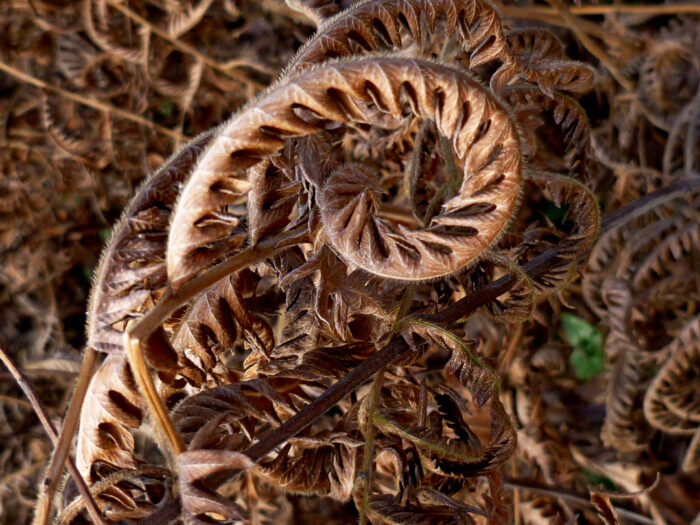
Today we’re visiting with Cindy Strickland, who lives in Raleigh, North Carolina.
Hello, fellow gardeners. I wanted to share a variety of mostly dry plant forms with impressive persistence that look suitable for matrix planting or drifts of plants. I photographed them in winter or autumn in Zone 7b or 6b because of their beauty and to get ideas for combinations.
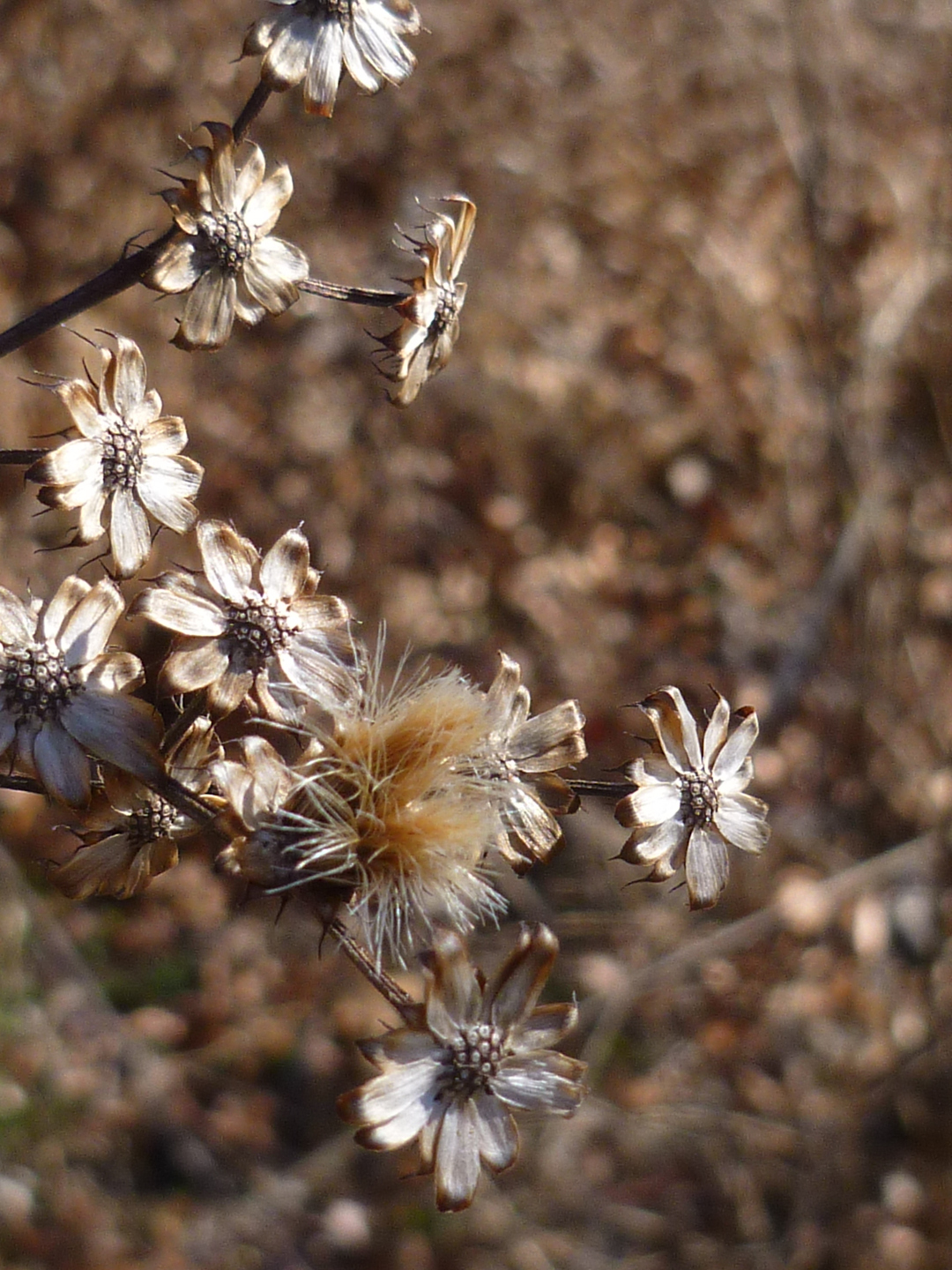 Vernonia noveboracensis, a butterfly magnet that can grow tall and is commonly called ironweed, likes full sun and grows in USDA Hardiness Zones 5–9. I have been noting the spread of it around the edges of a lake in my neighborhood.
Vernonia noveboracensis, a butterfly magnet that can grow tall and is commonly called ironweed, likes full sun and grows in USDA Hardiness Zones 5–9. I have been noting the spread of it around the edges of a lake in my neighborhood.
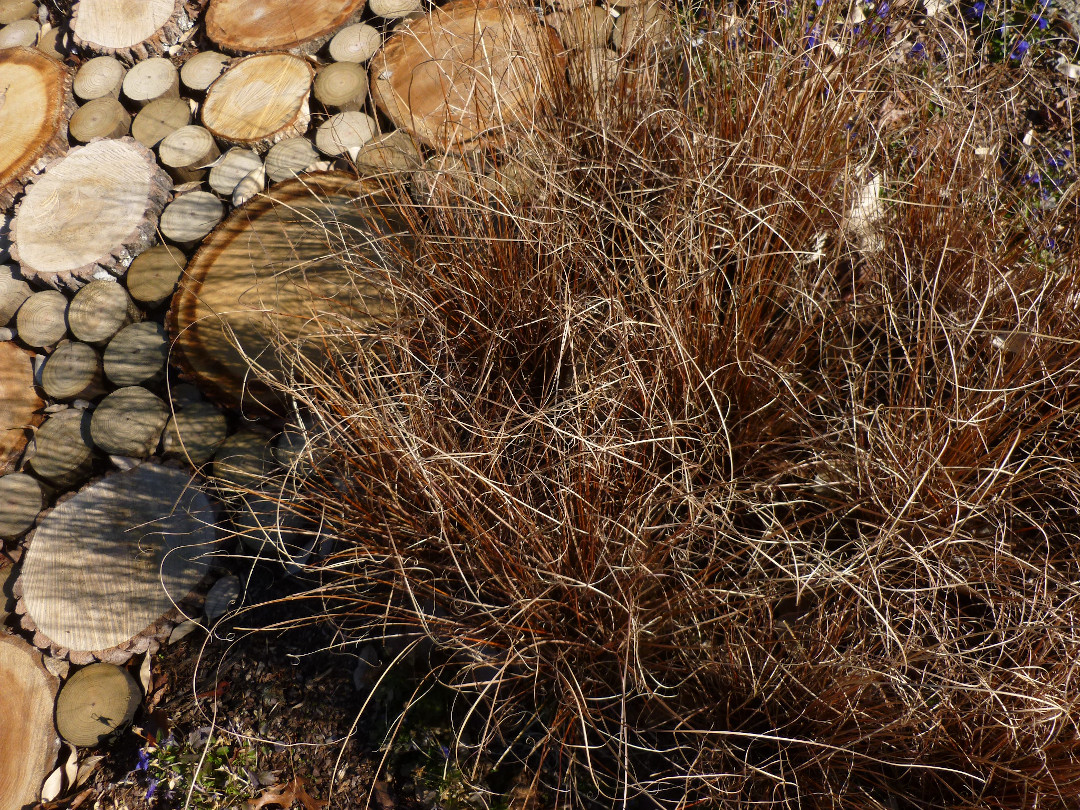 I like the clumping habit and rusty coloring of the sedge Carex buchananii ‘Red Rooster’ (Zones 6–9), but apparently it can be short-lived.
I like the clumping habit and rusty coloring of the sedge Carex buchananii ‘Red Rooster’ (Zones 6–9), but apparently it can be short-lived.

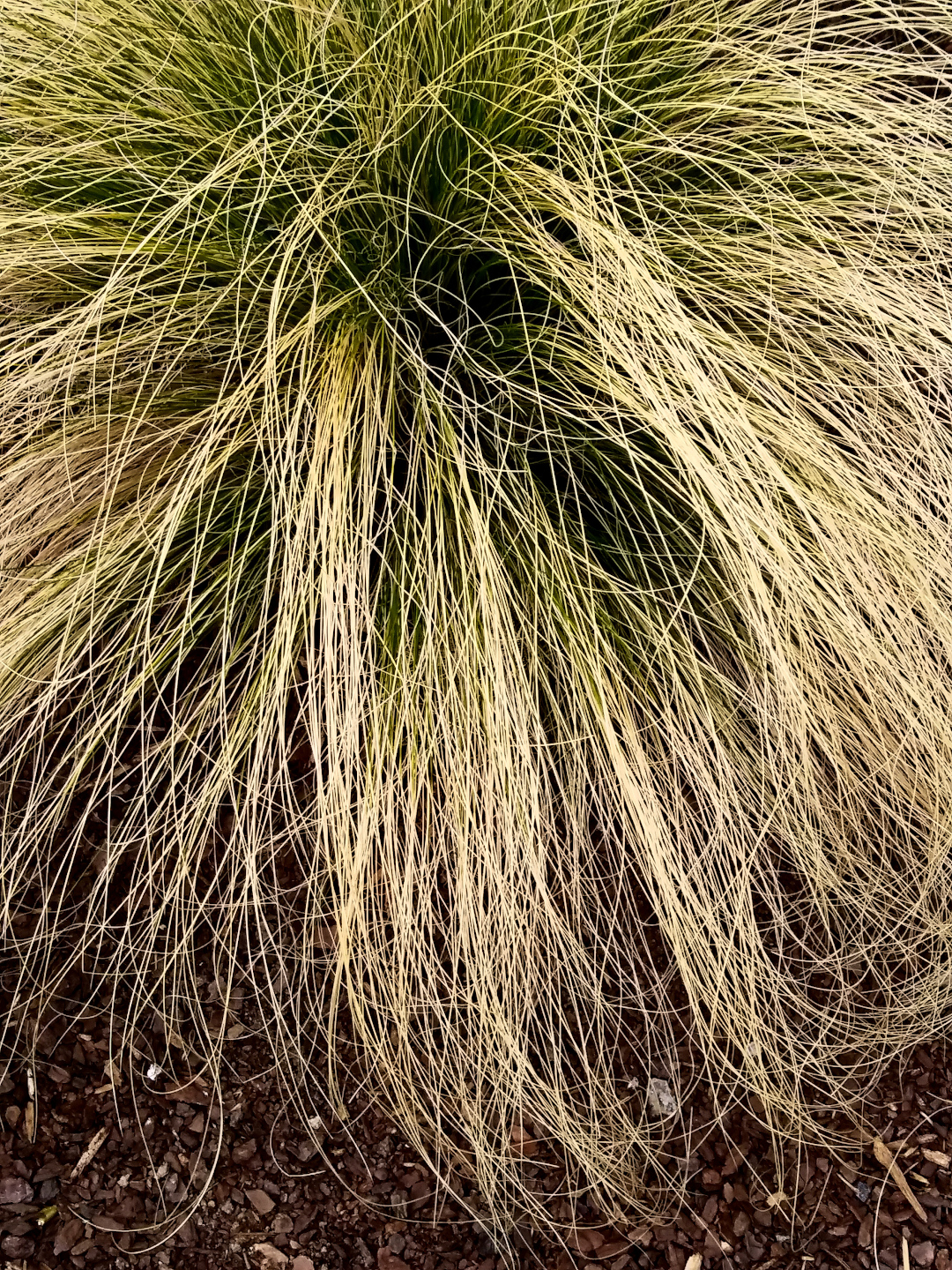 I love the wispy arching habit of this grass, Stipa tenuissima ‘Pony Tails’ (Zones 7–11). There is more about ornamental grasses and sedges here.
I love the wispy arching habit of this grass, Stipa tenuissima ‘Pony Tails’ (Zones 7–11). There is more about ornamental grasses and sedges here.
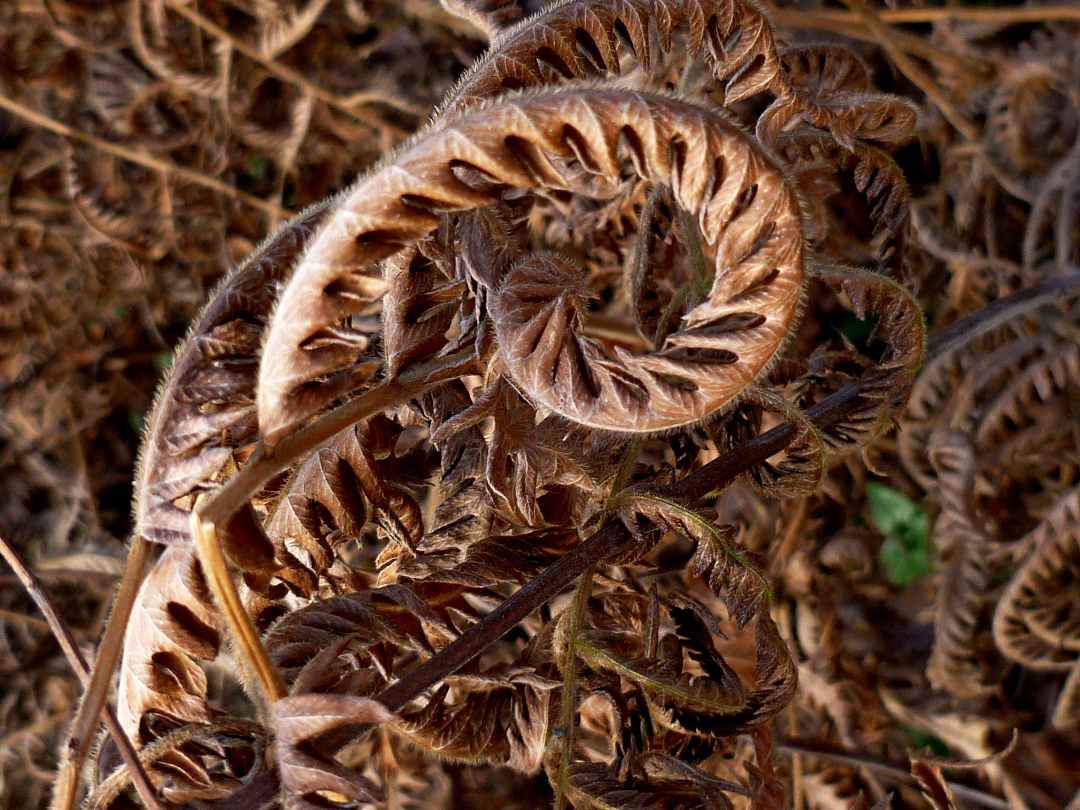 I was surprised to see a bed of ferns collapsed and curled but still intact in a public garden. In the woods near me, ferns growing with other species of plants often just seem to disappear when conditions for them become too harsh.
I was surprised to see a bed of ferns collapsed and curled but still intact in a public garden. In the woods near me, ferns growing with other species of plants often just seem to disappear when conditions for them become too harsh.
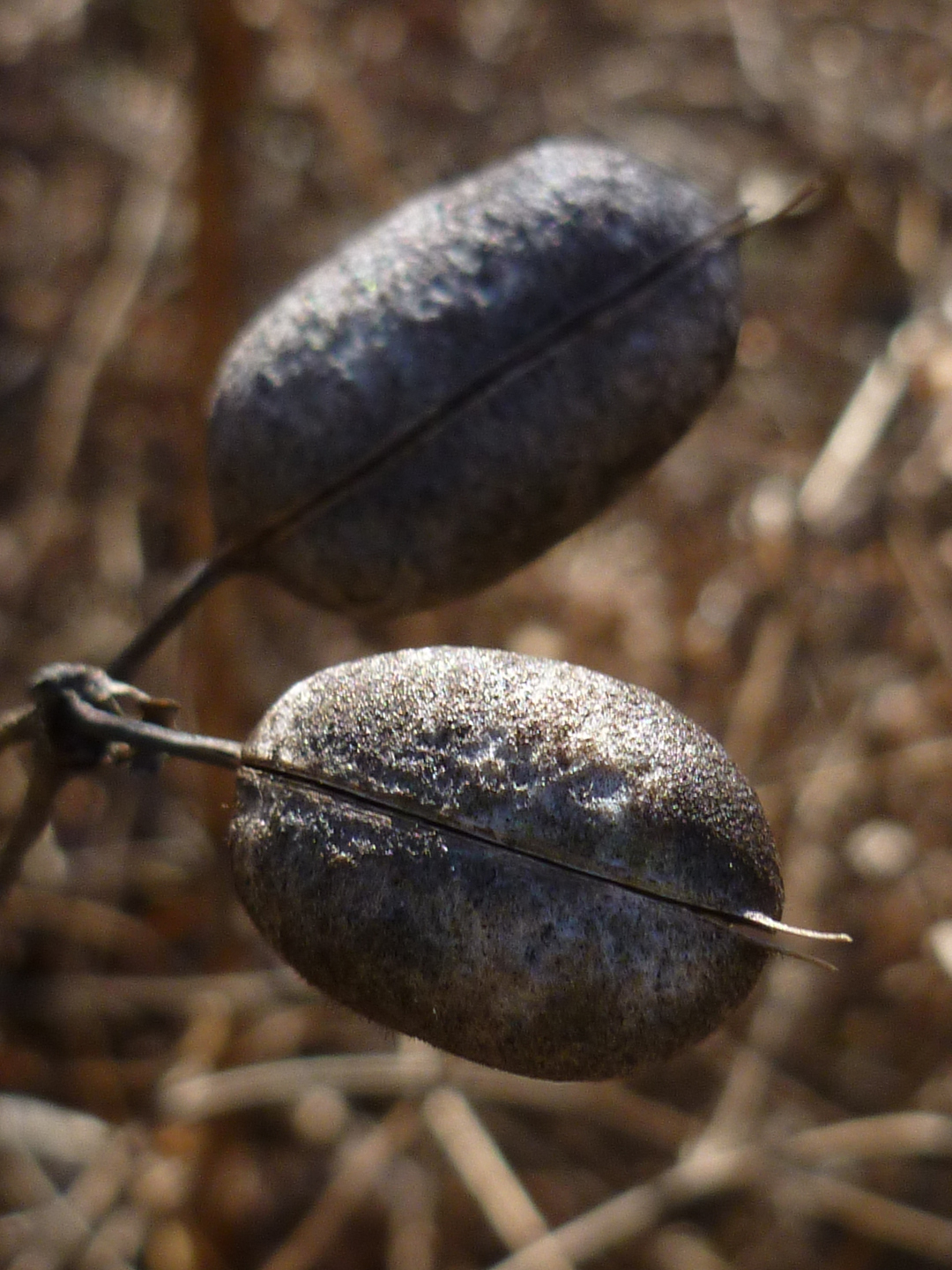 This stalk of baptista (Zones 3–9) pods brought back fond memories of seeing dried prairie plants like blue false indigo from when I did tours of a prairie restoration site for schoolchildren. Aside from rattling the large seedpods of the baptista, children also liked to touch the scented dried flower heads of hairy mountain mint (pictured below). Plants like blue false indigo (Zones 3–9) fix nitrogen in the soil, making it a great companion plant for grasses.
This stalk of baptista (Zones 3–9) pods brought back fond memories of seeing dried prairie plants like blue false indigo from when I did tours of a prairie restoration site for schoolchildren. Aside from rattling the large seedpods of the baptista, children also liked to touch the scented dried flower heads of hairy mountain mint (pictured below). Plants like blue false indigo (Zones 3–9) fix nitrogen in the soil, making it a great companion plant for grasses.
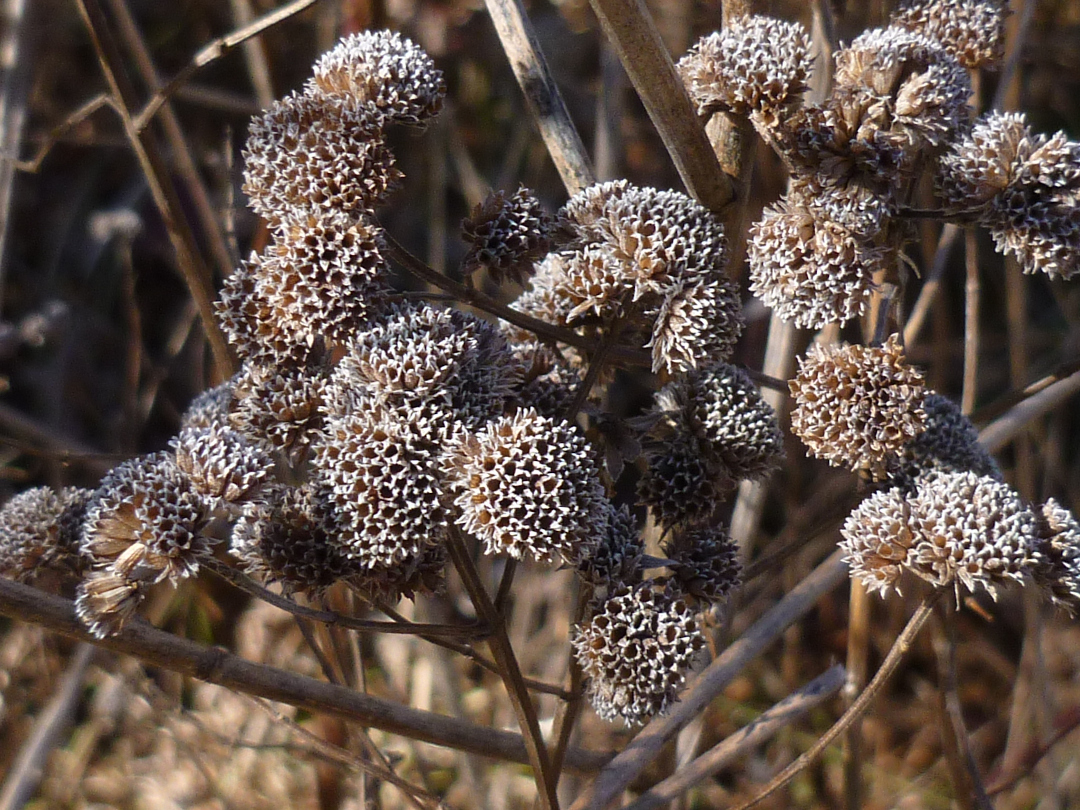 These are seed heads of hairy mountain mint (Pycnanthemum pilosum, Zones 4–8). The flowers are incredibly popular with pollinators while in bloom, and carry on looking beautiful long after they’ve faded.
These are seed heads of hairy mountain mint (Pycnanthemum pilosum, Zones 4–8). The flowers are incredibly popular with pollinators while in bloom, and carry on looking beautiful long after they’ve faded.
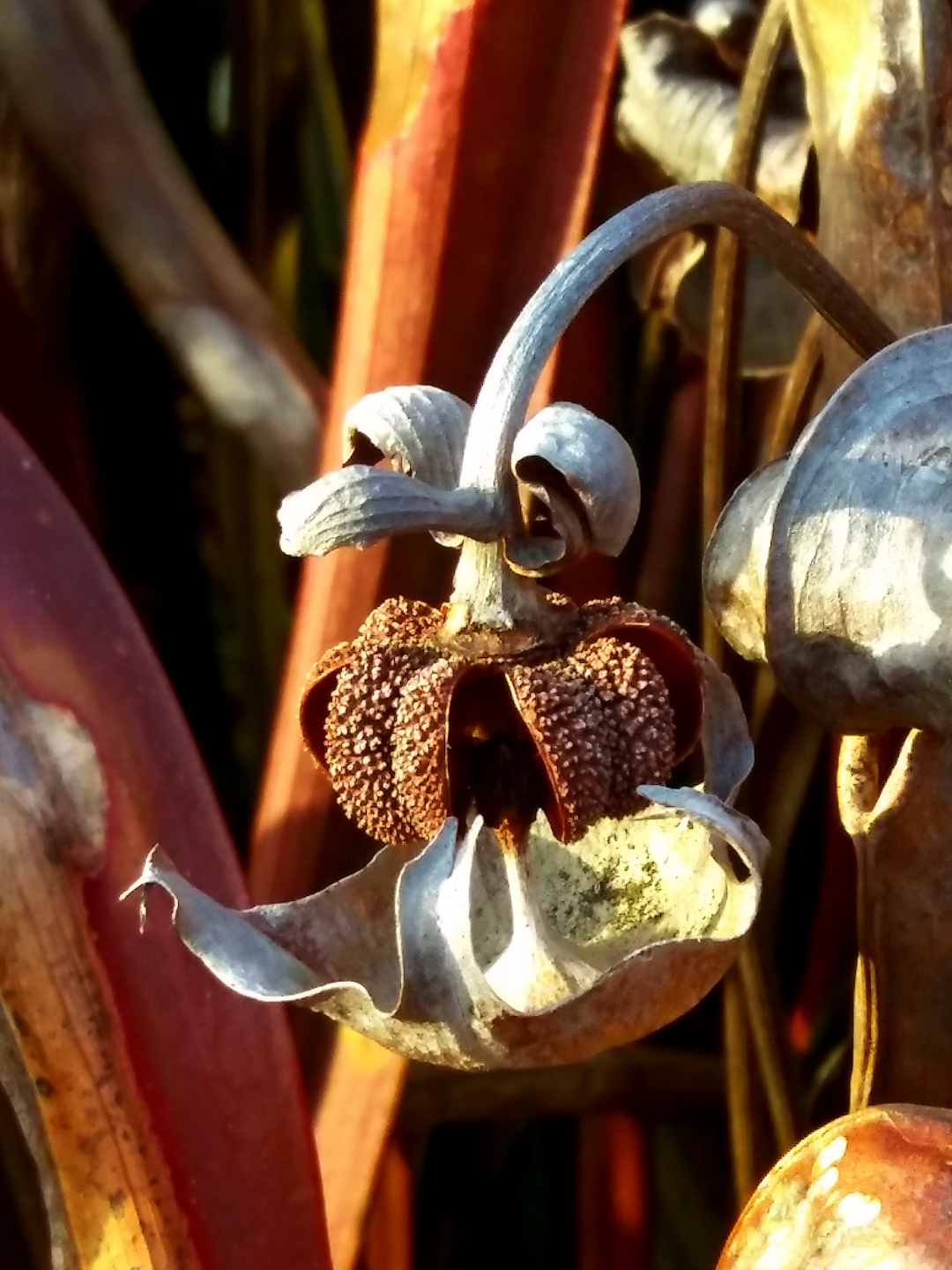 The seedpod of the hooded pitcher plant (Sarracenia minor, Zones 6–8) is almost a fantastical shape. Carnivorous plants like these require lots of acidic humus, full sun, and constant moisture—a tall order, but it’s interesting to see them!
The seedpod of the hooded pitcher plant (Sarracenia minor, Zones 6–8) is almost a fantastical shape. Carnivorous plants like these require lots of acidic humus, full sun, and constant moisture—a tall order, but it’s interesting to see them!
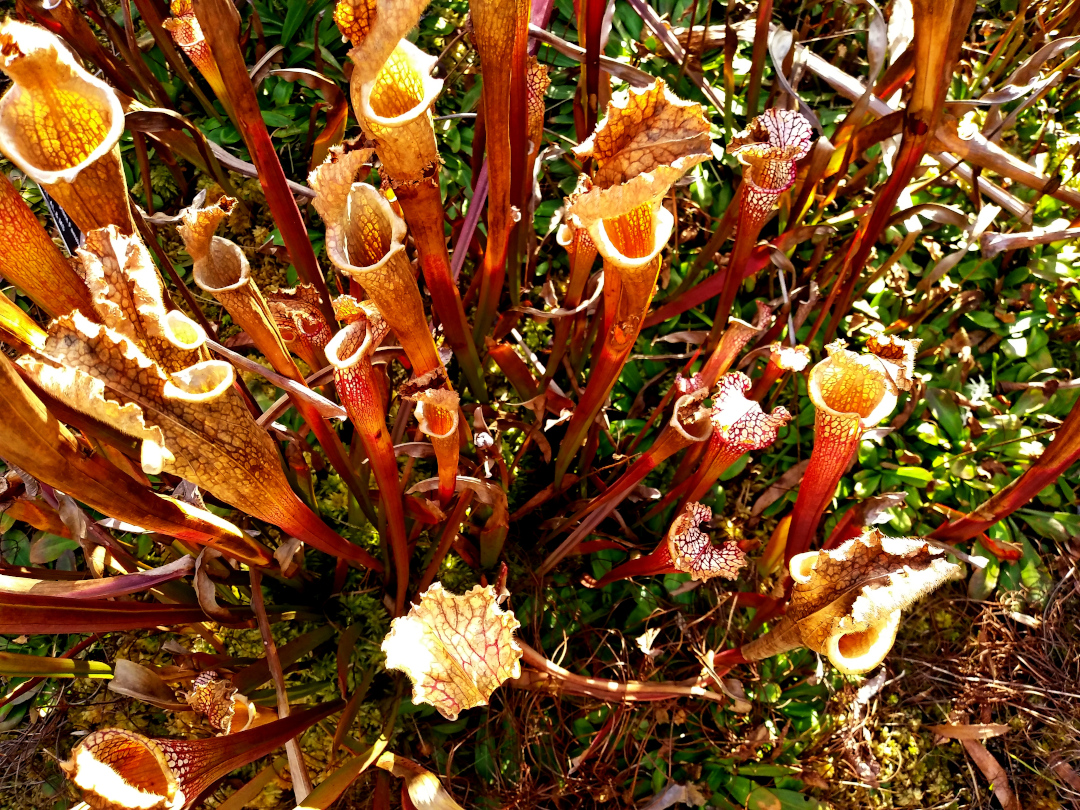 A colorful colony of whitetop pitcher plants (Sarracenia leucophylla, Zones 6–10) is side-lit by the late afternoon sun.
A colorful colony of whitetop pitcher plants (Sarracenia leucophylla, Zones 6–10) is side-lit by the late afternoon sun.



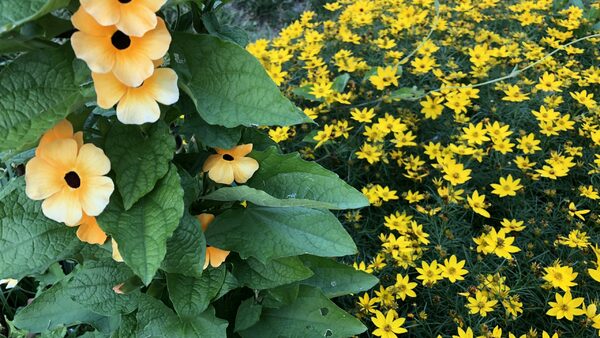













Comments
Great photos, Cindy! I think we’re seeing more and more appreciation for “stick season”, seed heads, and general non-traditional winter interest. All of which is great
Hi, Run - I appreciate your thoughtful comments and thanks for introducing me to the phrase "stick season."
Wonderful photos, Cindy. Gardeners often forget that brown is a color, and dried perennials with seedbeds are wonderful to look out in the late fall and winter (as well as serving as habitat for insects, birds and small animals). I also have been growing carnivorous plants for 5-6 years. They are so fun to grow. Thanks for sharing.
Thank you, Jayhawk.
Re: brown is a color
That made me laugh - yes it is!
And you are right about habitat - and how exciting it is to e.g. find a praying mantis egg sac...
It's great to read about the experience of other gardeners and nature lovers here.
Beautiful photography Cindy. It really helps one appreciate the quiet beauty of the late season garden!
Thank you, PKK. Yes, in the last few years especially, I have enjoyed going to the same places in all kinds of weather and observing at different times of day and from different angles and heights and noticing e.g. new species or erosion or the shifting of a streambed.
Lovely photos, Cindy - thanks for sharing. Demonstrates how the beauty of plants can persist with these beautiful forms. Nature’s gift for the winter.
Re: the beauty of plants can persist with these beautiful forms - nature’s gift for the winter
Well said, Gardendevas!
Thank you for your comments.
Great pics.
Hi, Treasuresmom - thank you!
Interesting perspective! Photos are wonderfully illustrative, and yours are great :) Thanks for sharing!
Kate or Pekka - thank you! And I remember seeing your beautiful garden featured on Photo of the Day.
Your photos are a wonderful exhibit of winter's color scheme in our northern garden.- beautiful.
Hi, BDO. Thank you for your thoughful comments!
What a treat you gave us today! I am adding vernonia to my list of plants to look for. We are changing our garden practices, and leaving more things standing, as well as in plant selection. Perhaps as a result, we found 3 praying mantis this year- first ever since moving to Washington state. Thanks again for the cool photos.
...you are welcome, PMV. I appreciate you sharing some of how your gardening is changing and some of the probable results!
I will probably move to a different hardiness zone in the next year so am already keeping my mind busy with different gardening scenarios...
Log in or create an account to post a comment.
Sign up Log in